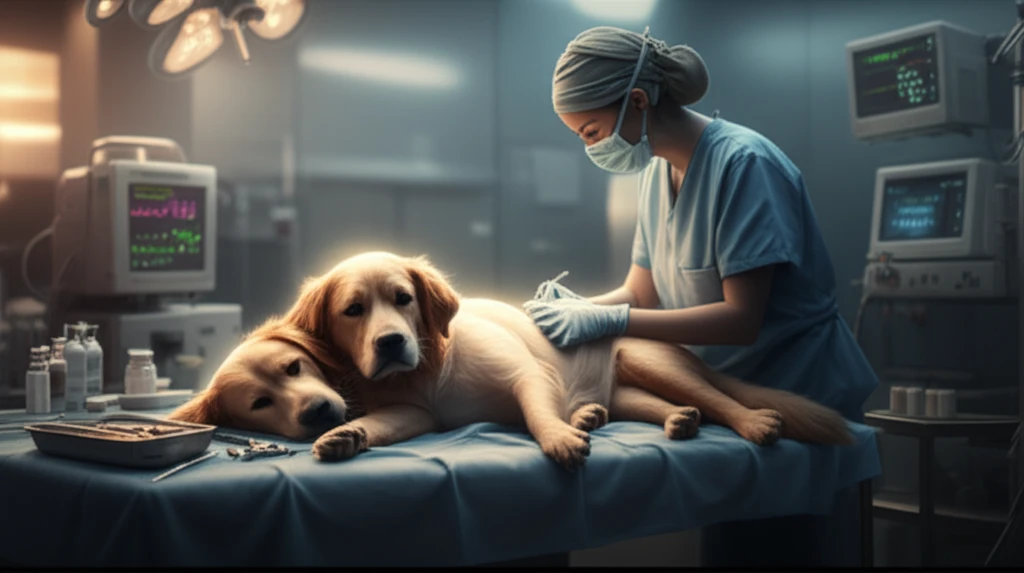
Beyond the Scalpel: How Epidural Anesthesia is Revolutionizing Veterinary Surgery
"Exploring the groundbreaking use of epidural anesthesia with butorphanol and ropivacaine in dogs, and what it means for pet owners."
In the world of veterinary medicine, the pursuit of safer and more effective surgical procedures is an ongoing quest. Just as in human medicine, the goal is to minimize risks, reduce recovery times, and ensure the well-being of the patient. One area that has seen remarkable advancements is anesthesia, particularly in how it's administered. A recent study has shed light on a promising technique using epidural anesthesia in dogs, offering new hope for a smoother surgical journey.
Imagine your beloved dog needing surgery. Naturally, you'd be concerned about the pain and stress involved. Traditional methods, while effective, can sometimes come with side effects and longer recovery periods. This is where innovative approaches like epidural anesthesia step in, offering a targeted and often gentler alternative. This technique, when combined with specific medications, can provide significant benefits, and this article will delve into the specifics of a recent study exploring this.
This article will explore a study that investigated the use of butorphanol and ropivacaine in epidural anesthesia for dogs undergoing ovariohysterectomy (spaying). We'll break down the study's findings, explaining the science behind it, the benefits for your pet, and what you should know if your dog requires a similar procedure. We aim to provide you with clear, accessible information, empowering you to have informed conversations with your veterinarian and ensure the best possible care for your furry friend.
The Science Behind Epidural Anesthesia: A Closer Look

Epidural anesthesia, a technique also used in human medicine, involves injecting medication into the epidural space, the area surrounding the spinal cord. This method allows for targeted pain relief, minimizing the impact on the rest of the body. In the context of veterinary surgery, epidural anesthesia offers several advantages. It can provide effective pain management, reduce the need for general anesthesia (which carries more risks), and potentially speed up recovery. When combined with specific medications, the benefits can be even more pronounced.
- Butorphanol: An opioid pain reliever that can provide significant pain relief and reduce overall anesthetic requirements.
- Ropivacaine: A local anesthetic that blocks pain signals in the nerves.
- Epidural Administration: Delivers the medication directly to the nerves responsible for pain sensation in the surgical area.
- Targeted Pain Relief: Reduces the need for general anesthesia, which minimizes potential side effects.
What This Means for Your Dog's Health and Well-being
The findings of this study offer a glimpse into the future of veterinary surgery. By utilizing advanced anesthesia techniques like epidural anesthesia with carefully selected medications, veterinarians can improve the surgical experience for dogs. This translates to reduced pain, faster recovery, and a lower risk of complications. As a pet owner, understanding these advancements empowers you to make informed decisions about your dog's care. Always consult with your veterinarian to discuss the best options for your pet and ensure they receive the most advanced, compassionate care available.
